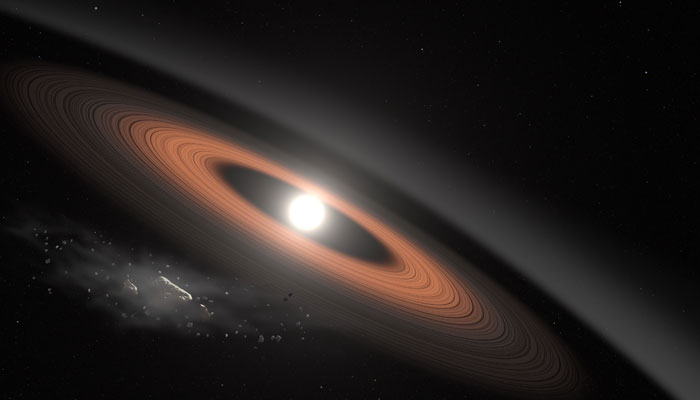White dwarf star turning into diamond just 104 light-years away
"In this work, we present the discovery of a new Sirius-like quadruple system at 32 parsecs distance," write scientists
June 13, 2023

In a rare discovery in deep space, scientists have identified a white dwarf star — primarily made up of carbon and metallic oxygen — which is about 104 lightyears away and may turn into a "cosmic diamond" after cooling down, reported Independent.
When a life of a star just like the sun approaches its end, it turns into a white dwarf — an extremely hot — with some of them may gradually harden and crystallise.
One such was spotted by astronomers which has cooled down, and its core may be transforming into a "cosmic diamond".
In a study — yet to be peer-reviewed — scientists described the white star.
They wrote in the study, accepted for publication in the Monthly Notices of the Royal Astronomical Society: "In this work, we present the discovery of a new Sirius-like quadruple system at 32 parsecs distance, composed of a crystallising white dwarf companion to the previously known triple HD 190412."
1 parsec is equal to 3.26 light-years or roughly 206,265 times the distance from Earth to the Sun.
The stars with mass less than eight times the Sun’s runs out of fuel, their outer stellar material is no longer intact and is pushed out, it leaves behind the star’s core which collapses onto itself into an ultradense object.
These dwarfs shine with the residual heat and cool down over time and turn into black dwarfs made of crystallised carbon, however, the process takes a quadrillion years.
We may not witness one completely crystallised star as the Universe is only about 13.8 billion years old.
But, according to researchers, we can spot signs of crystallisation starting in the cores of white dwarfs in the Universe.
Since the crystallisation process releases energy that dissipates as heat, scientists say it may lead to slowing in the cooling of white dwarf stars, which may make them appear younger than the dead star's actual age.
With the new-age telescope of the European Space Agency's Gaia, it has become easier to measure a star's distance away from Earth based on its actual brightness and age.
The discovery was made possible by data from Gaia space telescopes tied up with a system of three stars, named HD 190412.
Researchers suspect the star system is around 7.3 billion years old and the crystallising white dwarf's age could be about 4.2 billion years.
Scientists noted that the discovery of this system in such proximity to Earth, suggests there may be many similar star systems in the cosmos that could prove useful for benchmarking the crystallisation process.
"We propose that the discovery of this system at only 32 parsecs suggests that similar Sirius-like systems containing crystallising white dwarfs are likely to be numerous. Future discoveries may therefore allow for stronger tests of white dwarf crystallisation models," they wrote.









